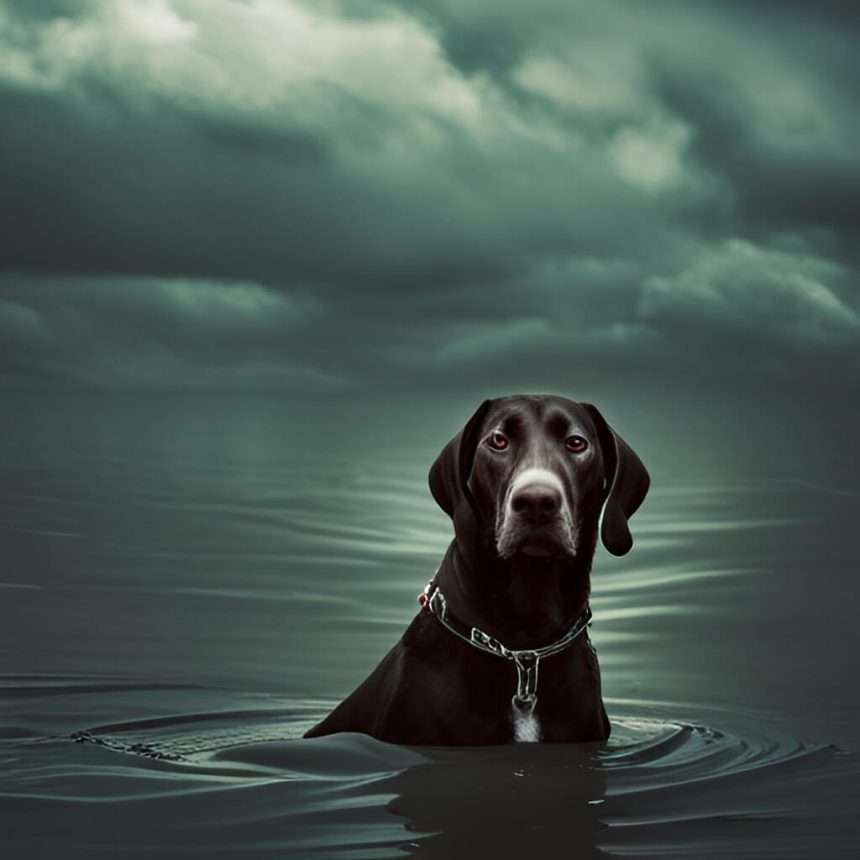Table of Contents
ToggleSwimming with Dogs: Understanding the Dangers of Algae
Summer is here, and for dog owners, there is nothing better than taking your beloved pet to the beach or the lake for some fun in the sun.
However, as you enjoy the water, it is essential to be aware of the dangers that can come with swimming in lakes or ponds. One of the main risks is blue-green algae, which can harm both dogs and humans. In this blog post, we will discuss more about what blue-green algae is and how it can affect your furry friend.
What is blue-green algae?
Blue-green algae, also known as cyanobacteria, is a type of bacteria that can be found in freshwater lakes, streams, and ponds.
While blue-green algae are natural and harmless in small amounts, they can quickly grow out of control, creating what is known as a “bloom.” Blooms of blue-green algae can be dangerous for your pets and can even be deadly if left untreated.
What are the dangers of blue-green algae?
When animals come into contact with a bloom of blue-green algae, they may be exposed to toxins that can cause a range of symptoms, including vomiting, diarrhea, seizures, and respiratory problems.
In severe cases, exposure to blue-green algae can even be fatal. The severity of the symptoms depends on the level of exposure, and it is essential to take action if you suspect your dog has been in contact with blue-green algae.
How to protect your pet from blue-green algae?
The best way to keep your dog safe from blue-green algae is to avoid swimming in water that is known to have a bloom. Signs of a bloom include a green hue to the water, a scum-like appearance, and a foul odor.
If you notice any of these signs, it’s best to keep your furry friend away from the water. Similarly, if your dog starts showing symptoms of blue-green algae exposure, including vomiting or diarrhea, you should seek veterinary attention immediately.
What should you do if your pet is exposed?
If you suspect your dog has been exposed to blue-green algae, act fast.
Rinse your pet off with clean water as soon as possible, making sure to avoid getting the contaminated water in your own eyes or mouth.
Immediately seek veterinary attention, even if your dog is not exhibiting any symptoms at the time. Your vet can test for exposure and recommend treatment if necessary.
Treating Algae Poisoning:
If your dog has come into contact with harmful algae, it is crucial to seek veterinary attention as soon as possible. There is no one-size-fits-all treatment for algae poisoning, as it largely depends on the severity of the symptoms.
However, if caught early, it can be treated with the help of activated charcoal and supportive care. In severe cases, hospitalization may be required.
Understanding the Dangers of Algae
As a dog owner, it’s essential to be aware of the risks associated with swimming in lakes and ponds, especially during the summer months.
Blue-green algae can be harmful to your pet, but by staying informed and taking the appropriate precautions, you can help ensure your dog stays safe and healthy. Always remember to keep an eye out for any signs of a bloom and seek veterinary attention if you suspect your dog may have been exposed.
With the right knowledge and preparation, you and your furry friend can enjoy a fun and safe summer together.

Louie Montan
Meet Louie Montan, the dog-loving, beer-drinking, travel-writing extraordinaire behind Great White Website Services. As a full-time blogger, Louie’s passion for all things canine shines through in every post he creates. But don’t let that fool you, this creative mind is also well-versed in the art of travel and knows how to appreciate a good glass of cold beer with friends. When he’s not busy exploring new destinations or tasting different brews, you can find him jamming out to some tunes or indulging in his love for good food. And of course, no writing session is complete without his best friend, Sage by his side, providing invaluable insights and snuggles as Louie crafts his witty and engaging content from the comfort of his home office.







